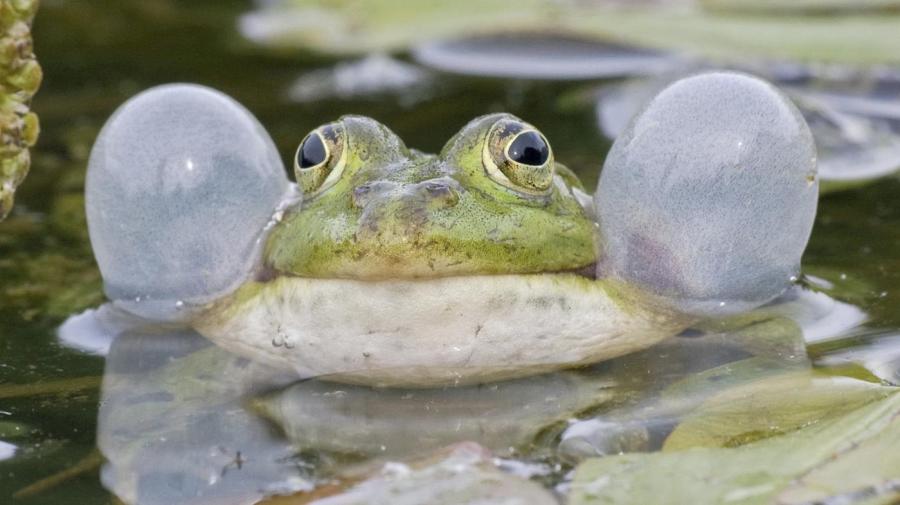How Do Frogs Talk?

Frogs communicate with other frogs by emitting croaks and other sounds. Frogs produce their calls by inflating their vocal sacs with air, and then forcing the air out through their nose or mouth.
Frogs use a variety of different calls, including calls that attract females, calls that indicate their gender and calls that drive off predators. Male frogs vocalize extensively, but the females of many frog species are mute. Mating calls are unique for each species, and each call allows females to recognize conspecific males. Release calls and escape calls, which are designed to repel a variety of species, are not unique to each species.
The males of some frog species, such as bull and leopard frogs, have larger tympanums, or eardrums, than females. This likely helps them produce effective calls and reflects the degree to which the males rely on vocalizations to attract mates. Often, males find a suitable place in the habitat and begin calling.
When a female hears the sounds of an attractive mate, she will approach him. The frogs will embrace in a behavior known as amplexus, in which the male clasps the female from behind. The female then releases eggs into the water while the male releases sperm to fertilize them.





